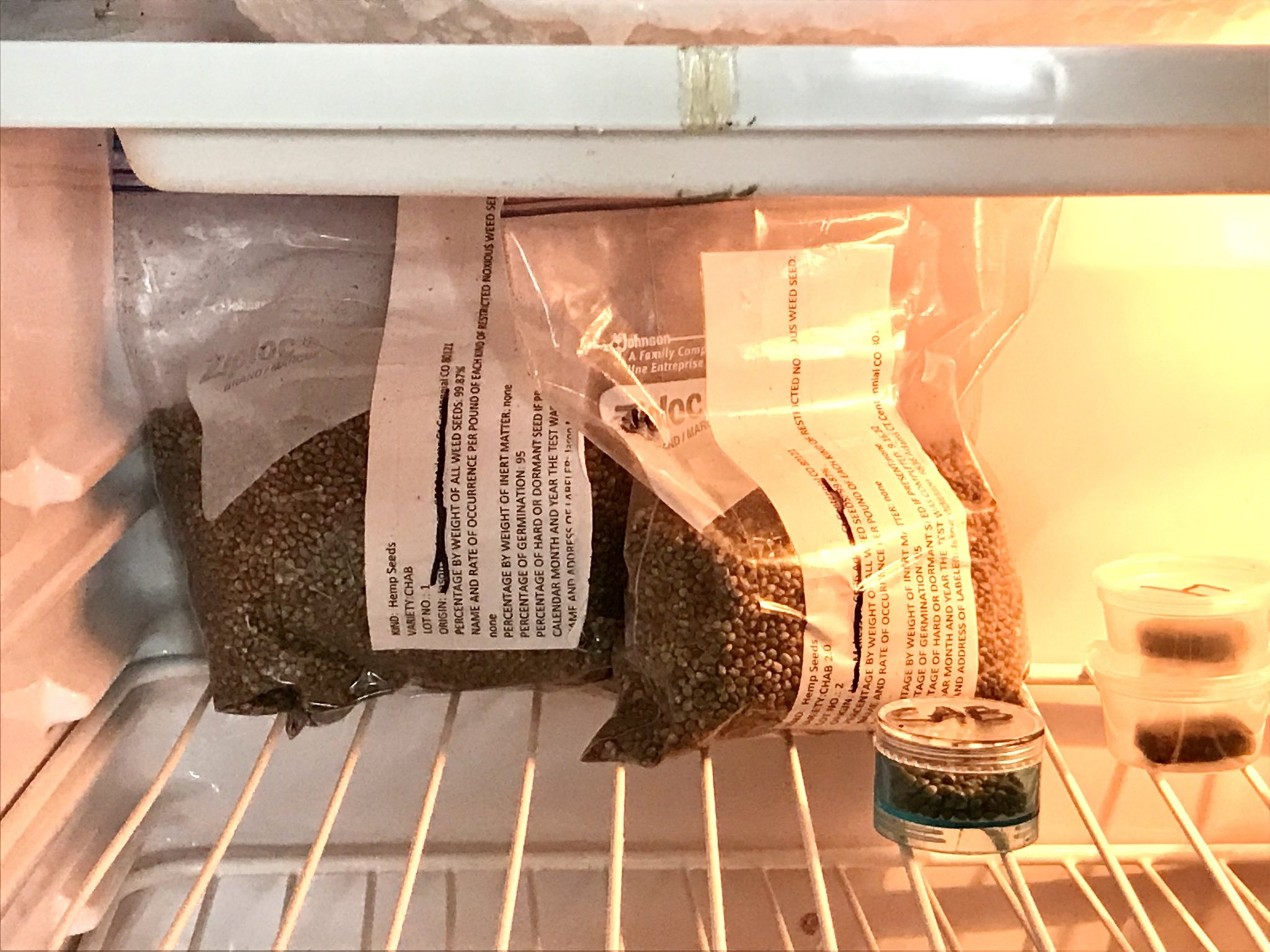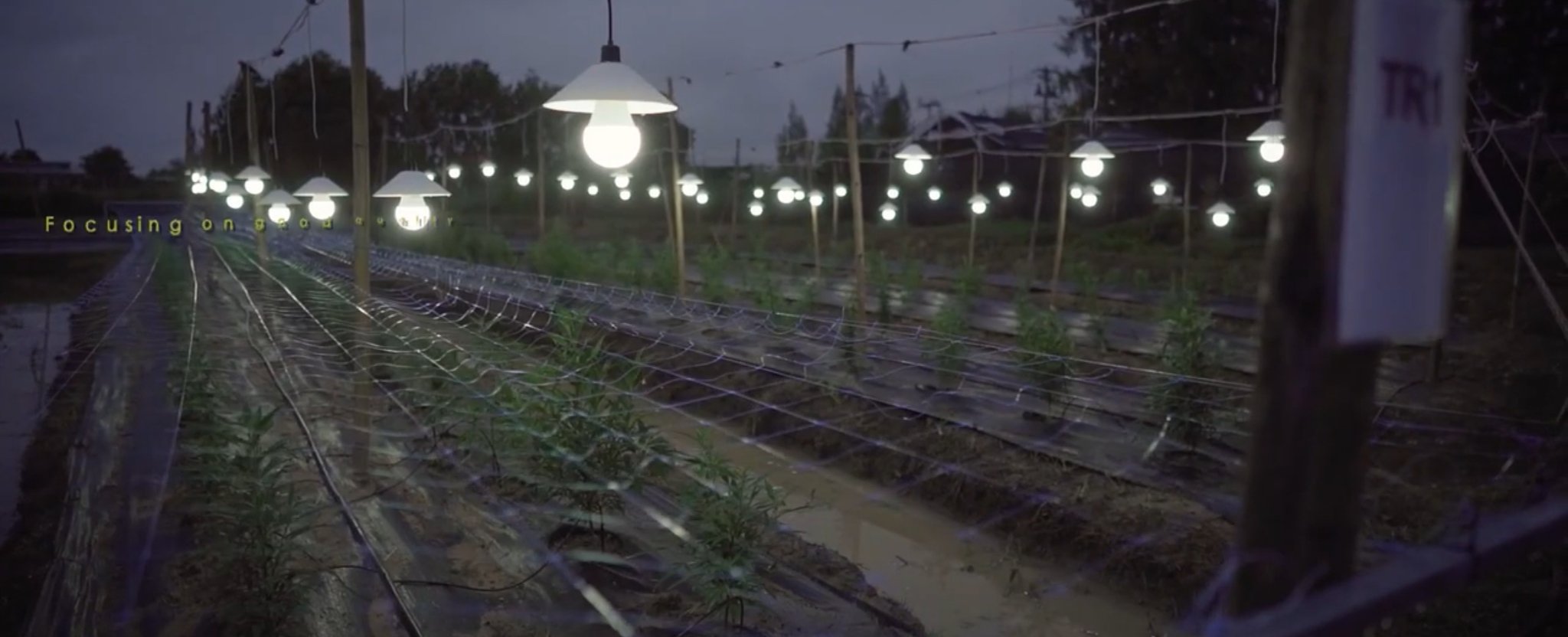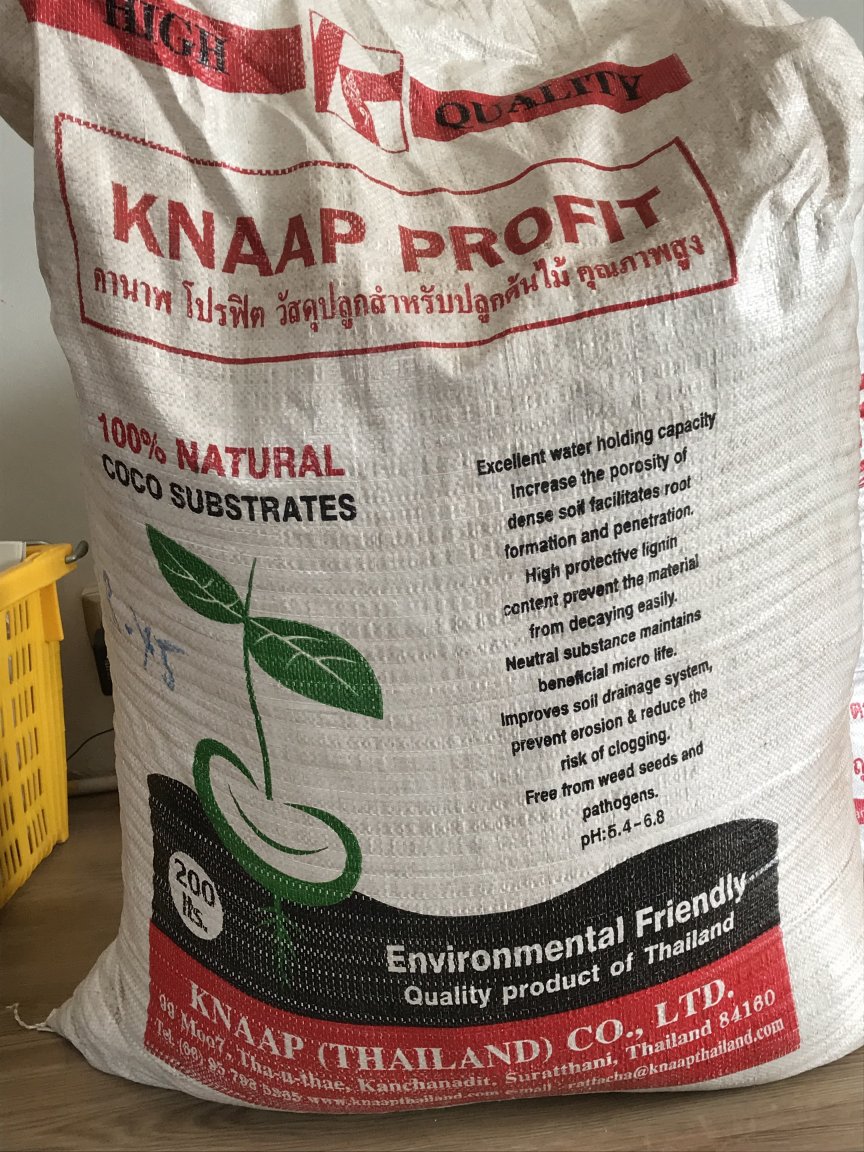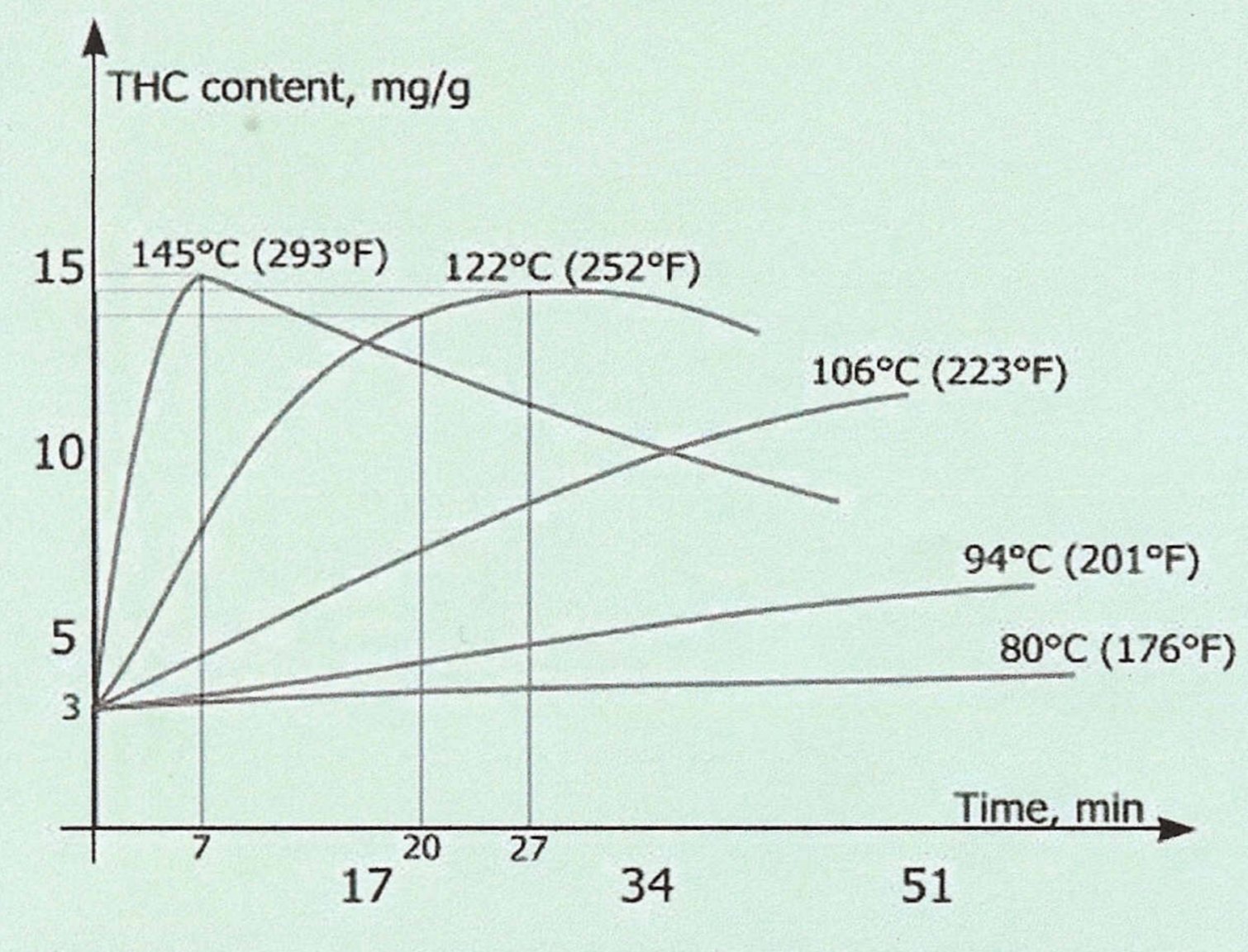
SamuiGrower
Member-
Posts
128 -
Joined
-
Last visited
Content Type
Events
Forums
Downloads
Quizzes
Gallery
Blogs
Everything posted by SamuiGrower
-
I find it somewhat fascinating that a group of cannabis loving connoisseurs, here in Thailand, on this forum, put their faith and trust in the naming conventions and THC content of the flower being sold here. Telling the truth is not a prerequisite to selling flower. With that said, how do you know if you are smoking a Sativa, Indica or hybrid? The short answer, you don’t. Scientifically, those lines have been blurred for a very, very long time. The way YOU feel after smoking it, is by no way a reliable arbitor of a strain or chemotype/cultivar. In 2019, The Journal of Cannabis Research published a paper detailing how genetic tools clearly showed the misconceptions of strain reliability. To summarize that paper…. “We failed to find clear genetic support for commonly referenced Sativa, Indica and Hybrid types as described in online databases. Significant genetic differences within samples of the same strain were observed indicating that consumers could be provided inconsistent products. (Edit: and you are!) These differences have the potential to lead to phenotypic differences and unexpected effects, which could be surprising for the recreational user, but have more serious implications for patients relying on strains that alleviate specific medical symptoms.” Naming conventions (of strains) do not align with common widespread definitions of Sativa, Indica, Hybrids, and Hemp. Strain inconsistencies are clear and evident and not isolated to single sources. Why is that? Because you can call your seed or flower anything you want on the retail end, even in regulated, seed-to-sale markets. Am I intimating there are ‘bad actors’ in the business as well as a beyond-a-shadow-of-a-doubt, muddied genetics? Absolutely. 18th-century researchers originally classified cannabis into two species based on the plant's appearance. Researchers now know that on a molecular level, there's no difference between an indica strain and a sativa strain of cannabis. The advent of molecular testing proved the original classification system was inaccurate. Genetic analyses do not support the reported proportions of Sativa and Indica within each strain, which is expected given the lack of genetic distinction between Sativa and Indica. To that end, breeders, growers, dispensaries and budtenders needed a better system to convey the differences between strains, especially to the lay public. Enter the Terpene classification system. Indica, which is said to physically relax the body and give a sedative effect, and sativa, which is said to be energizing and provide more of a head-high. In reality, no scientific evidence supports this dichotomy because on a molecular level, indica and sativa strains don't have pattern differences that set the two "types" apart from each other. As a result, consumers buy strains that don't actually align with the perceived effects they're marketed to provide. So, it must be the entourage effect, right? It was proposed many decades ago as a hypothesis and still remains just that, with no hard data scientifically or medically to empirically support it. There is no purity or dosage that can be medically induced to replicate any consistent outcomes. We certainly know the inhalation of combusted terpenes (smoking) was never ‘baked’ into the hypothesis from the beginning. To further complicate the idea that terpenes provide the UP or DOWN effect, consider this; terpene synthase in cannabis is spatial. No two plants or parts of the same plant produce the same terpene profile. To further add to the ‘confusion’, set, setting, diet, mood, exercise and a litany of other factors all contribute to the perceived effect of the cannabis you smoke. It’s personal and different for everyone. I would put more stock in that belief system than in the Sativa UP/ Indica DOWN constructs. I, for one, am amazed of the phenotype variation in the seeds sold today. I cannot rely on most seed banks (mostly all) to provide stable genetics on the commercial level in which I work. Hybrid crosses are easy to produce and stability is not a factor for most seed banks. A sour diesel strain in NY looks, tastes, and test completely different from one grown in northern Michigan. So, if you’re a hobby grower and you plant 3 sour diesel seeds and you get 3 distinctly different phenotypes, what do you say? Not much, obviously, because it doesn’t matter, right? But if you’re a commercial grower and you grow out a 1000 seeds and it’s clear you have many variants, your only choice is to pheno hunt, create mothers, and clone or feminize to create stable genetics with testing. Emphasis on the testing part. Stable genetics begin with F1 and S1 lineage. Haven’t heard a single reference to that by any grower or seed supplier here. It’s a buyer/grower beware climate for sure. If labels define Sativa or Indica as two distinct groups then the differences should be seen in biochemical markers and genetic assays. A published study in Nature Plants, showed the ‘naming labels’ were meaningless. Strains labeled Sativa were more closely related (genetically) to indicas than sativas. In 1999 the strain, AK-47 won the Sativa Cup in that year’s Cannabis Cup. Four years later the same strain won the Indica Cup. Right. For those of you who say they can definitely tell the difference between a Sativa or an Indica (and I’ve read all the eye-rolling post here), I say bless your hearts. I have zero doubt that you are describing the effects you are feeling. The purpose of this post is NOT to denigrate you or say otherwise. I would love to meet you and offer you a position in my company (lots of travel and benefits). We would sit down over a few bowls of different strains and cans of Pepsi and Coca Cola (labels obscured - of course!) and work out a role for you. There is certainly an argument in saying, there are landrace sativas, here in Thailand from which you can judge the “Sativa effect” There are, but they are not pure, and the THC levels have been so diluted from years of outdoor cross pollination of other landrace strains, that It would be hard to judge them. This is the ‘stuff’ (brick weed) that is so overtly discussed in this thread as ‘hardly worth smoking’, but they are sativas. As a postscript to my diatribe, has any grower ever provided a COA (Certificate of Analysis) of their flower? Have you ever seen one? I pay 10,000 Baht for a COA after extraction (CBD). Has any breeder/seller ever posted one on this forum? I just see photos of schwag with fantasy THC percentages, sellers talking mostly marketing drivel and lots of people whining about the look, quality, effects, prices, etc. - and rightfully so, at that. P.s. these “home test” kits and devices hardly count for anything. HPLC/GCMS or nothing! I have no doubt that there is a connoisseurship here in this forum but WE are definitely not the market - tourists are. Maybe if WE (or regulation) demand COA’s, the quality will improve and so will the market. Wishful thinking for sure
-
To the posters talking about the “best” weed to use for edibles: good weed, brick weed, shake, high quality, low quality, etc. Think about it like this. You are THC mining. The ONLY concern is yield. Hard stop. Higher quality flower will yield a higher net amount of THC, lower quality or shake, will yield less. You are essentially stripping out ‘whole plant’ minor cannabinoids, terpenes and flavonoids (in home decarboxylation). There are no characteristics of the plant (cultivar, chemotype, phenotype) left other than THC, the psychoactive component of your edible. My opinion: find cheap, bulk weed and process it - mine the THC out of it. THC from brick weed is identical to the THC in Unicorn Poop Lemon OG Fairyland Sherbert. Again, the only difference is yield.
-
CBDa is a little more difficult to decarboxylate, requiring longer times and technically, higher temperatures. The issue with ‘home’ decarboxylation of CBDa is the degradation (oxidative) of other cannabinoids. You can expect all terpenes to be volatilized and evaporated off at that point. THCa will ultimately convert to CBN, which has 25% of the psychoactive attributes of THC. This won’t be a problem if THC is not what you are after, as suggested. To your question; it is difficult, without testing, to determine how much thermal degradation of CBD is taking place. Heat, oxygen and light are mostly responsible for degradation. For a 97% conversion efficiency of CBDa, use 127c for 50 minutes or 130c for 20 minutes (technically) I am in the CBD space, and use a lab grade, double-walled, borosilicate glass reactor to decarboxylate CBDa distillate (vacuum rotovaped first to distill off the ethanol first), circulating 130c oil through the outer wall, under constant circulation (both oil and distillate) for 30 minutes. This equates to 95-97% efficiency (tested). We start collecting terpenes off at 100c (mostly monoterpenes).
-
Decarboxylation temperature and time matrix? Accurate?
SamuiGrower replied to connda's topic in Thailand Cannabis Forum
My post from another topic that might be relevant to this one: -
Making edibles with decarboxylated weed is nothing more than a hybrid form of extraction. In a commercial (legal) market, extraction is done by ethanol, hydrocarbon (propane, butane, hexane, etc.) or CO2 extraction, where an extract or distillate is produced as a starting point for edible manufacturing. There are other hybrid technologies available, but they are not so mainstream or scalable as of yet. Commercially, in edible manufacturing, an extract is produced, the solvent removed, and the extract is decarboxylated. A C.O.A. (certificate of analysis) determines the purity. An 80% THC extract means 1 gram of extract contains 80% THC. 1000 mg (1 gram) = 0.800 mg of THC. If your dosage for an edible is 20 mg, you can create 40 portions (cookies, gummies, brownies, etc.). This was pointed out and made clear by @stoner in a previous post. This is the ONLY WAY to quantify purity and dosage. Decarboxylation of weed (flower) by time/temperature is not only inefficient but non-quantifiable and is seldomly, if ever done on a commercial scale, for many reasons, but suits the hobbyist grower quite well. Uneven heating/temperature variability, starting moisture content, time control and particle size of the flower, makes the process wildly inconsistent. The decarboxylation AND the fat/oil extraction are both very inexact. As mentioned in previous posts, degradation of cannabinoids and terpenes is inevitable in dry, biomass decarboxylation. Some posts mention the loss in distinction of Sativa/Indica traits in decarboxylation as well as a “benefit” of a single strain, in do-it-yourself decarboxylation. This is a non sequitur and makes no sense because you are extracting THC for the purpose of ingesting and edible. There is no ‘whole plant, full spectrum, entourage effects’ when decarbing weed in an oven and then extracting THC in a fat. If you are a hobby grower, looking to make your own edibles, you have few choices than time/temperature oven decarboxylation and fat/oil ‘steeping’. There is no need to quantify your efficiency or amount of THC. Experiment and make a product that gets you high. If you are in a legal, regulated market, the process of producing edible begins with extract/distillate. The downstream manufacturing will always be consistent and quantifiable based on batch C.O.A. and then modifying the recipe/formula of the edible. This was pointed out by @stoner (again). High quality or low quality weed is not really important if you are doing home decarboxylation and fat/oil extraction because of the losses due to inefficiency of decarboxylation as well as the fat/oil extraction. If you seek optimal results in home decarboxylation, strive for uniform dryness (you must start with absolutely dry biomass), uniformly ground flower and use one of those ‘fancy’ decarb devices that have been mentioned – it will create a uniform (linear) decarboxylation curve with a high(er) rate of efficiency that is far better than any oven. There are hot pot, rice cooker, slow cooker, mason jar hacks out there – they are all good and better, once again, than an oven. There are multiple time/temp permutations to decarboxylation. The science points to 122C at 27 minutes as the sweet spot. This is defined by decarboxylation efficiency AND degradation of cannabinoid loss. The understanding of what decarboxylation does has been stated in previous posts but I would like to point out the following. There is a 14% loss (roughly) of THC when going from THCa to THC due to the difference in molecular weight. The efficiency of home decarboxylation is probably 85% (moisture, grinding, uneven heating). So the net sum of THC from the start is likely 70% of what you started with. The decarboxylated flower/biomass is then put into oil/fat and this results in another inefficient extraction and loss. I point this out to clarify batch-to-batch inconsistency of home decarboxylation as an inexact science. My last point is about fat, after reading several posts, it requires clarification. All cannabinoids are lipophilic/hydrophobic: they are oil soluble and water insoluble. Not all fats affect cannabinoid bioavailability the same way. They dissolve in fats (butter, oil, etc) and they act as a carrier for edibles. Not all fats are created equally. If you use butter, your ingested edible must first go through first-pass-metabolism through the liver. You can expect 10% systemic efficiency, but you will still get an effect because the THC is converted to a much more potent form (11-OH-THC). If you use MCT Oil (medium chain triglycerides), from coconut oil, mostly made from C8/C10 (caprylic and capric acid), your edible is far more bioavailable and passes through the blood-brain barrier by bypassing first-pass liver metabolism and uses the lipid absorption pathway. The systemic efficiency is now around 30%. If you are concerned about a faster, “better” high, use MCT/coconut oil. I hope this clarifies a few of the points made here and in other posts regarding decarboxylation and making edibles on a non-commercial scale.
-
So here in lies the problem with every cannabis forum around the world: The OP asks, “what’s wrong with my plant”? The responses: Too much water Needs nitrogen Needs seaweed extract Needs Guano Needs earth worm castings Needs molasses Needs humic acid Needs epsom salts Needs blood meal Needs bone meal Needs micros Good grief! The only thing shocking, for me, is nobody said add Cal-Mag. 😂 The above observation is why there are so many failures and lots of mediocre weed. I feel sorry for the OP as well as anyone seeking advice on growing.
-
You need nitrogen. The issue is organic inputs are not bioavailable immediately and your plant is hungry. Find a basic water soluble plant food that has nitrogen (NO3) in it. Kelp is great for stress and that is what your plant has: nutrient deficiency=stress. Aside from the numerous vitamins, minerals, trace elements and hormones, it has nitrogen as well (but not enough to support a growing plant). Feed all the rest of those inputs mentioned after it’s healthy. You say “a small plant in a pot….” How small is small?
-
It’s hungry. Feed it.
-
colloidal silver for reproducing autoflower seeds.
SamuiGrower replied to Pouatchee's topic in Thailand Cannabis Forum
Easy, yes, but those seeds will have such genetic diversity it will look like a grab bag of good, bad and ugly. When crossing autos in particular, the MxF (male x female) lineage of each strain will produce a staggering amount of genetic diversity. Autoflowering, in general, is a recessive trait and your crosses will produce any number of the following phenotypes: male & female photoperiod seeds, hermaphrodites, males & female autos. As far as the characteristics of purple punch and NL’s in the seeds that are produced - like I said above, good, bad, and ugly. There is far less of a “freak show” when crossing photoperiods because there is no Cannabis Ruderalis (autoflowers) in their genetics. I would like to point out that ALL autoflowers on the market are a cross between C. Ruderalis and C. Sativa/Indica. On a good day, each autoflower strain already has 4-5 phenotypes. So when you cross two autoflowers you can expect 16-25 different phenotypes. Culling out phenos from auto x auto crosses will take 5 generations to produce stable seeds and traits. As I stated in a previous post, it’s easier to work with photoperiods as far as stability. You can do one F1 cross then back cross for S1. Two generations for stable genetics. But since you like ‘the science’ and it’s been a rewarding hobby, have fun. It will be like getting a grab bag of 100 different seeds! ???? Your seeds will provide years of genetic diversity. -
colloidal silver for reproducing autoflower seeds.
SamuiGrower replied to Pouatchee's topic in Thailand Cannabis Forum
Categorically not true and not personal (????). Refrigerated, seeds will last almost indefinitely. If you store them at high temperatures/fluctuating humidity, you can bet germination rates will plummet and seed viability will decline. I have been using genetics (seeds) from the 1990’s with over 85% germination rate. They are refrigerated. The 43,000 Cherry Abacus seeds I imported through Thai FDA approval, have been here well over a year and our germ rates are 90-95%. My company have been logging our metrics since 2014. -
colloidal silver for reproducing autoflower seeds.
SamuiGrower replied to Pouatchee's topic in Thailand Cannabis Forum
No. I have been working on mid to large scale grows (consulting) since 2014, and from my experience, do not find autoflowers reliable enough to work with at scale, economically. I have done trials with them and frankly, find they get wonky with any stress event (temperature, humidity - VPD fluctuation). “Early” flowering (SOG and SCROG style), single cola, ridiculously low yields, phenotype fluctuation AND if that’s not enough, they can herm (express hermaphroditism) as fast as you can say, “ladyboy”. I have done genetic projects. My company developed Cherry Abacus and Cherry Abacus 2.0 with the 2018 Farm Bill, Hemp legalization in 2018 in the USA. It’s a high CBD, low THC, with some decent secondary cannabinoids as well. If you Google it, you will see every Tom, Dick and Mohammed seedbank offering Cherry Abacus. No two are the same because, like I have stated before, the two biggest lies in the cannabis seedbank sector is: the name of the strain and the THC percentage. I have a few million CHAB and CHAB 2.0. ——BUT I DIGRESS!!!! Sorry. ???????????? With that said, I do know this: it will take 5 generations of back crossing to create anything remotely stable with autoflowers. You can expect a lot of phenotypes with unsatisfying characteristics, to put it gently. It will be very difficult to control unplanned cross pollination while you’re trying to find phenos with good characteristics.. I realize not everyone is growing commercially and hobby grows are awesome but do the work with photos (photoperiod C. Indica/Sativa) - it’s much more satisfying and far more reliable. Autoflowers (C. Ruderalis) just aren’t wired the same way. Their carbon footprint, nutritional and lighting expense are the same as a photoperiod and they yield far, far less. Ultimately, it’s this that makes it a non-starter for me. What do I think of those light choices? I take a very dim view of them, pardon the pun. I don’t want to sound preachy BUT do not skimp on your lights. Lights are the primary source of yield and potency they should NEVER be your limiting factor, not even if you plan on growing one plant. It would be a waste of bandwidth to state all the reasons why you shouldn’t buy ‘those’ lights. Buy a standard form-factor light bar style light like Mars Hydro. If your intent is a knock-off ‘cheaper’ option, try alibaba - there are some terrific options, and if you’re interested I would make a recommendation. I wouldn’t consider (in a hobby grow) anything less than 650 watts if you’re looking for quality, dense flower with great bag appeal. Buy a ‘standard’’ PAR (ePAR), full spectrum, 3000-3500 kelvin/color for veg & flowering. Current Samsung LM301B/H diodes and Meanwell drivers. Good=650 watt, Better=800 watt, Best=1000 watt. We trialed these and loved them. They are here in Thailand and I have no affiliation. https://phlizonth.com/products/phlizon-ultra-full-spectrum-led-grow-bar-light-8-bars -
"No Weed" signs have appeared in my Condo building..
SamuiGrower replied to bobbin's topic in Thailand Cannabis Forum
I did a consulting project in Northwest Alaska (Arctic Circle). There were “NO SEAL OIL” signs in the hotel and taxis. ???????????? Apparently it stinks to high heaven. -
colloidal silver for reproducing autoflower seeds.
SamuiGrower replied to Pouatchee's topic in Thailand Cannabis Forum
Don’t forget, it takes 8 weeks of flowering (pollination) to produce fertile/viable seeds - same amount time it takes to make buds. TEK = technique SOP = Standard Operating Procedure -
colloidal silver for reproducing autoflower seeds.
SamuiGrower replied to Pouatchee's topic in Thailand Cannabis Forum
Northern Lights responds really, really well! I’ve been using the same NL genetics for 25 years now. Stick with what works - for sure! -
colloidal silver for reproducing autoflower seeds.
SamuiGrower replied to Pouatchee's topic in Thailand Cannabis Forum
STS (Silver Thiosulfate) for producing feminized seeds, I have found, is far more reliable and predictable, especially in high temp/high humidity environments. It is extremely difficult to quantify colloidal silver ppms and can create some unusual mutations. STS is far easier to work with. There are multiple SOP/TEKS on the internet that can be found. Happy to help with any guidance…. -
Just to be clear, autoflowers, Cannabis Ruderalis, is NOT a photoperiod plant. It will enter a generative state (flowering) through “maturity” signaling and not through ‘short day’ lighting. They are completely unaffected by light and nutritional regimes and any type of ‘crop steering’. To further complicate matters, C. Ruderalis (autoflowers) are extremely susceptible to ANY stress (abiotic/biotic) and can: flower or produce hermaphroditism at the drop of a dime (baht ????). I find them, on a commercial level, to be extremely unreliable and unpredictable. As many of you autoflower growers know, they can not be cloned or manipulated to produce female seeds and their yields are notoriously low.
-
Gas Lantern Routine (GLR) is a quick go to, used by outdoor growers in equatorial short day conditions (12 hrs light), to keep cannabis in a vegetative state and preventing flowering. It is essentially night interruption. If you have a 12 hour day and a 12 hour night (more or less), you interrupt the night cycle (skotoperiod) with 1 hour of light. The scheme is as follows: 12 hours light (day) 5.5 hours dark 1 hour light 5.5 hours dark. Stringing low wattage led bulbs a meter over the plant top is all it takes.
-
Increasing pH at the leaf surface with Potassium Bicarbonate is a good idea. Using any oil in flower is not. You will forever regret it if you intend on smoking the buds. Snap, crackle, pop, comes to mind… 4 plants? Do a complete defoliation of any leaf with a petiole (stem). Needless to say, remove ALL affected leaves first. We can debate this technique later if you would like. The plant will rebound if…. Wash your hands with soap at all steps. You will re-contaminate your plants with septoria spores. Increase airflow to more than you have now. Persistent high humidity is a catalyst for septoria. Lollipop/skirt the lower 1/3 of your plant from the substrate up. Decrease watering events with a larger dry back Spray your tent, walls, floor with H2O2 (3%). Remove your plants first.
-
Sorry to hear. Because it’s fungal and spreads through spores, it can be particularly insidious. The only good thing about septoria is that it attacks leaves and not flowers; it does not affect or change cannabinoid content. That does not mean you should necessarily smoke it, sell it or even make extract from it. If you could provide a few details I can give you some meaningful advice, treatment and overall IPM procedure, moving forward. How many plants are affected out of how many plants total? Is this a commercial or hobby grow? Indoors or outdoors? What substrate are you in? You say you are “several weeks into flowering”. Are you past 3rd week? You say you think you got it? Are you SURE it’s septoria? Not Ca deficiency?
-
Required strength CBD oil for a good night sleep
SamuiGrower replied to Kenny202's topic in Thailand Cannabis Forum
Cannabis has been known to be an anti-inflammatory as well as having analgesic effects, alleviating symptoms associated with pain, swelling and chronic inflammation. The issue is with quantifying dosage and purity. This has alluded medical science, as research on cannabinoids is relatively new due to stigmatization and legality in funding studies. Progress is being made and there are more and more studies. Israel leads the crusade on medical cannabis research. It is further complicated by the fact that medical cannabis research utilizes Cannabinoid fractions, I.e THC, CBD, THC+CBD, CBG, etc. and not whole plant flower “smoking” as a mode of delivery. Efficacy is hard to measure and many responses are binary: it works or it doesn’t work. It may work for one person and do absolutely nothing for another. Control groups and placebo response often overlap. To further add to the frustration, one study may show a positive conclusion and another shows a negative response or no definitive conclusion at all. Most well researched and funded studies draw a singular and VERY important conclusion: THC or CBD alone has not shown the reported efficacy as compared to THC+CBD in concert. Most cannabinoids attach to receptors (CB1 and CB2) and regulate certain responses, I.e THC attached to CB1 and you get high. This is an over simplification but illustrates the point. CBD does not bind to any receptors but MODULATES the effects of THC. In essence, CBD down regulates the high and acts as an anxiolytic (anti-anxiety). Some cannabinoids act as antagonists (blocks a known effect), agonists (produces an effect) and reverse agonists (produces the opposite effect) depending upon the inclusion of other cannabinoids. CBD, purported to be a sleep aid, is best utilized with THC as opposed to CBD alone. Read the previous posts in this thread for anecdotal evidence. THC is known and prescribed in pain management but CBD is not. An FDA approved drug (USA, Canada) Sativex (Nabiximol generic) is a botanical 1:1 THC:CBD oromucosal spray that has shown to be effective in pain management and sleep disorders (as well as MS spasticity). Here’s the part that attracts the trolls: The science does NOT support the marketing claims. The claims are rampant, the YouTube videos are everywhere and misinformation runs through this forum and all the others around the world. Human nature is always looking for novel, innovative, passive ways to treat everything (weight loss, sleep, pain, etc.) and cannabis fits in nicely with that concept. How many people have said, “….I want better sleep but I don’t want to get high….” They look towards CBD, the cure all panacea for all that ails them. There is simply no empirical evidence. If there was, CBD would be know the world over as an effective sleep aid, and apparently, it’s not. People tend to take the least path of resistance and find the link, video, testimonial that matches their belief system. Most people don’t read medical journals or white papers. ANY company (for profit) offering their cannabis derived ‘magic bullet’ will tell you exactly what you want to hear. If you do self-directed research, look at timely articles, 2020-present. As more and more research is done, the science becomes more definitive. I have attached links (hopefully permitted) that support the points I’ve made in this post as well as other posts I’ve made on the subject. To the poster: I apologize as there are really no “simple articles”. The science is less palatable and digestible compared to the marketing claims. Cannabis and pain (National Institute of Health) https://www.ncbi.nlm.nih.gov/books/NBK224384/ CBD and pain (Harvard) https://www.health.harvard.edu/blog/cbd-for-chronic-pain-the-science-doesnt-match-the-marketing-2020092321003 Cannabis and inflammation (Frontiers in Pharmacology) https://www.ncbi.nlm.nih.gov/pmc/articles/PMC9124761/ Cannabis and chronic pain (NIH) https://www.ncbi.nlm.nih.gov/books/NBK574562/ I hope this is helpful. Feel free to contact me (DM) if you wish. -
I’m assuming this is a non-commercial grow. There are limited sources of washed and buffered coco coir, here in Thailand. @Stoner has had good success vetting different mediums, hopefully he’ll give you some recommendations. I’ve done trial runs with the following with good results: http://www.knaapthailand.com/eng/product.php I believe we were paying 700 baht/200 liters, delivered. We ultimately decided to go with LECA, clay balls, reusing and sanitizing them between uses. My advice to you with the Knaap product is: use Knaap ‘profit’, it has 30% aeration/vermiculite. Pre-charge the coco before transplanting your seedling/clone with 1000 ppm/2.0 EC GH GROW or cal/mag (if you use it). If you don’t pre-charge the coco, you will always be chasing a calcium deficiency. Seems counterintuitive (high ppms), but the CEC of coco will hold back calcium and magnesium. GH delivers the results, buy Canna, if you can afford it and run away from AN.
-
Decarboxylation is likely a subject best suited for a heading in its own post. Because it’s being debated here, I’ll post my 2 baht(s) worth. It’s unlikely @BritManToo is experiencing a placebo high (he’s an experienced player, after all) or the THC is being destroyed (in its entirety) as a topping on a 400F oven pizza. First, let’s bring in the rest of the audience, to make them ‘decarb’ savvy . The phytocannabinoids in dried/fresh, cured flower (bud) exist in two forms: the acid form (I.e. THCa, CBDa, etc) and the non-acid (normalized) form (I.e. THC, CBD). A typical analysis of flower, might look like this: THC 3% THCa 17%. The acid forms are always in higher abundance than the non-acid/normalized form. If ingested (flower eaten ‘raw’) by you or your dog, the high would be negligible or minimal, as only the THC fraction can get you high while the acid fraction will not. If smoked (combustion), heat will convert the acid fraction to the normalized form. This is the easiest explanation of decarboxylation. You are essentially removing one carbon atom that happens to come along with two oxygen atoms (COOH). This is known as a carboxyl group (CO2+H or COOH). The de-carboxyl-ation process, as a result, produces carbon dioxide - CO2. It is photosynthesis (of C3 plants, like cannabis) that puts the extra carbon item there. Decarboxylation (decarb-ing) of flower, is a concern for those that make edibles or extract/distillate for edibles or activated CBD oil processors, like myself. If you are a smoker, this wouldn’t concern you. Weed Pizza Topping So, on to the question of the efficacy of weed as a topping…. @NedR69 is correct about 400F destroying THC but this is not a ‘closed’ environment in a lab oven on an isolated THC fraction. Let me explain. (He is also correct about eating green/raw leaves BTW) Decarboxylation is not exact nor is it linear. Ovens are not uniform, not all flower is pre-dried to a friable, uniformly milled sample to begin with. The decarboxylation process is only about 70% efficient to begin with. Decarboxylation is a function of temperature and time. High temp/short time and inversely, low temp/long time. Old, aging weed will naturally ‘decarb’, especially if exposed to ambient temp, air, light and humidity. Let’s say ground flower/bud is sprinkled on top of a pizza, it makes contact with sauce and cheese. The sauce, cheese AND weed never reach 400F (204C), in fact unless it looses all water content (Aw), it doesn’t get hotter than 212F (100C). THCa is undoubtedly being converted to THC. The surface area of the weed exposed to the dry heat of the oven, is reaching temperatures that will destroy THC but the remainder would likely decarboxylate, getting you high. I have no doubt whatsoever that you can get high by sprinkling weed on pizza BUT it would hardly be an efficient way of doing so. I have attached a time/temp decarboxylation graph below. It is in need of updating (perhaps a thesis for a post grad at USU, UM or Guelph). It is 30+ years old and limits out at 15% THC potency. I hope this answers a few questions for the community. Here’s a couple of tips if you do decarbing (or remotely interested). Start with completely dried (friable) and sieved material and pick a time/temp off the chart. I.e. 145C for 7 minutes. If making extract or distillate: place your distillate (glass vial/beaker) in an oil bath at 122C for 24-26 minutes. You will see CO2 off gassing then stopping when completed.











